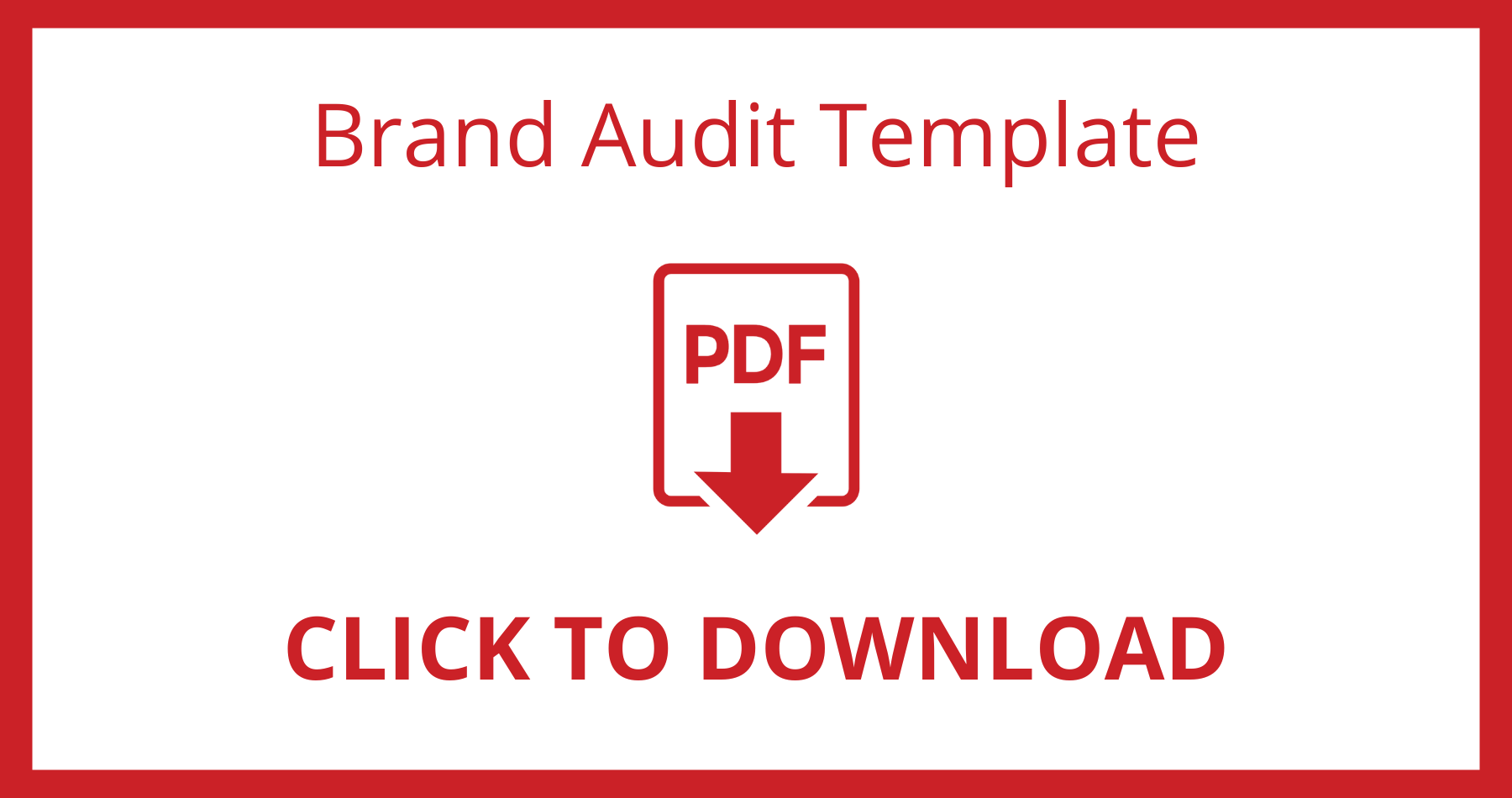
Today’s business landscape is filled with competition, from new startups to already established companies trying to outwit each other. In order for your business to survive and rise among the competition, it has to be able to differentiate itself.
Your brand is what differentiates your business from all your competitors. Because of its importance, it’s essential to regularly do a brand audit to monitor and check progress.
In this article, you will learn all the nuts and bolts of how to do a brand audit. At the end of this article, you will also be able to download our brand audit template and we’ll be sharing a brand audit example that you can use as a reference point going forward.
What is a Brand Audit?
A brand audit is an in-depth analysis of a brand’s positioning in the market and in the eyes of its customers and employees.
This audit also reveals how a brand is performing compared to its competitors and reveals potential areas for improvement.

A brand audit consists of analyzing the following aspects:
- How well a brand is doing to achieve its goals
- Customer satisfaction
- Employee feedback
- Target audience and ideal buyer persona
- Product and service improvements
- Advertising and marketing strategies
Why is Doing a Brand Audit Important?
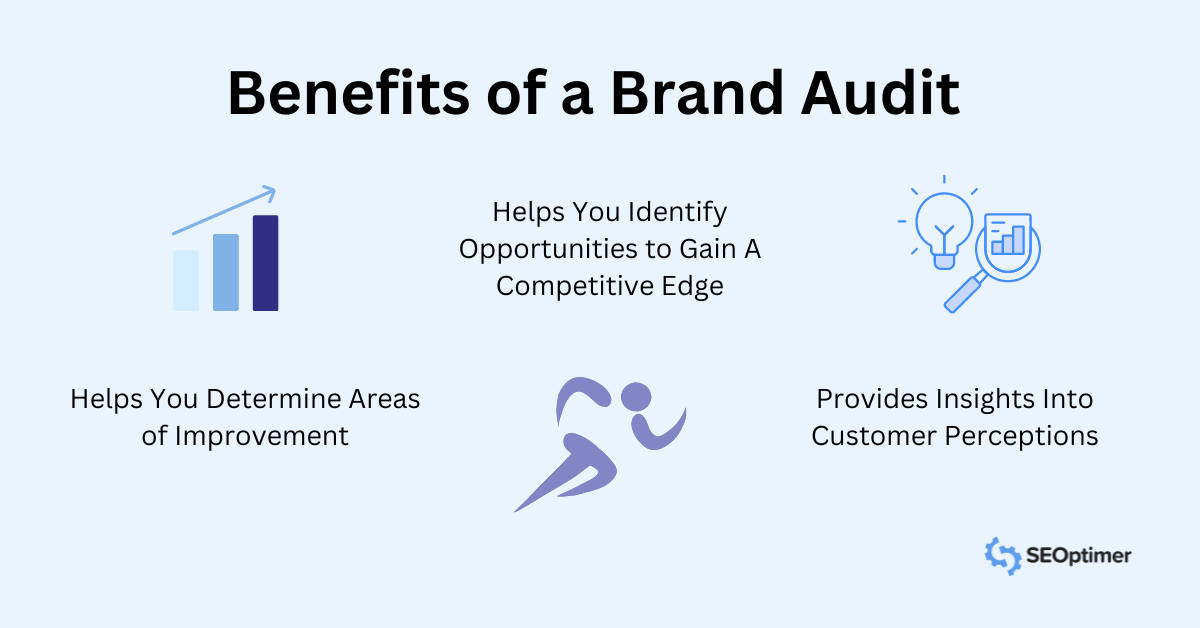
A brand audit serves many different useful purposes and should form part of your overall digital marketing plan.
First and foremost, it helps you identify areas where your brand is excelling and areas that need improvement. This information is important for developing effective marketing strategies and making informed business decisions.
By conducting a brand audit, business owners and marketers can get a better understanding of their business’ current positioning in the marketplace. This analysis reveals what they need to do in order to grow and develop the brand going forward.
A brand audit also provides insights into your target audience’s perception of your brand. Understanding how customers view your brand can help you tailor your messaging and positioning to better resonate with them.
This can lead to increased customer loyalty, higher engagement, and ultimately, improved sales and revenue.
Lastly, a brand audit helps you stay ahead of the competition.
By analyzing your competitors’ strengths and weaknesses, you can identify opportunities to differentiate your brand and gain a competitive edge.
This can be particularly valuable for small businesses and startups looking to establish themselves in the market.
Note, a brand audit goes much deeper than just analyzing logos, website colors, and marketing materials.
When Should You Conduct a Brand Audit?
There are several key times when conducting a brand audit can be particularly beneficial. One of the most common times is during a rebranding or repositioning effort.
If you’re considering changing your brand’s visual identity, messaging, or positioning, conducting a brand audit can provide valuable insights to inform your decisions.
Another important time to conduct a brand audit is when you’re experiencing a decline in sales or customer engagement.
If you’re noticing a drop in key performance metrics, a brand audit can help identify the root causes and provide actionable recommendations to address them.
Finally, conducting regular brand audits as part of your ongoing brand management strategy can help you stay proactive and responsive to changes in the market.
By regularly assessing your brand’s performance, you can ensure that it remains relevant and competitive in an ever-evolving marketplace.
Elements of a Brand Audit
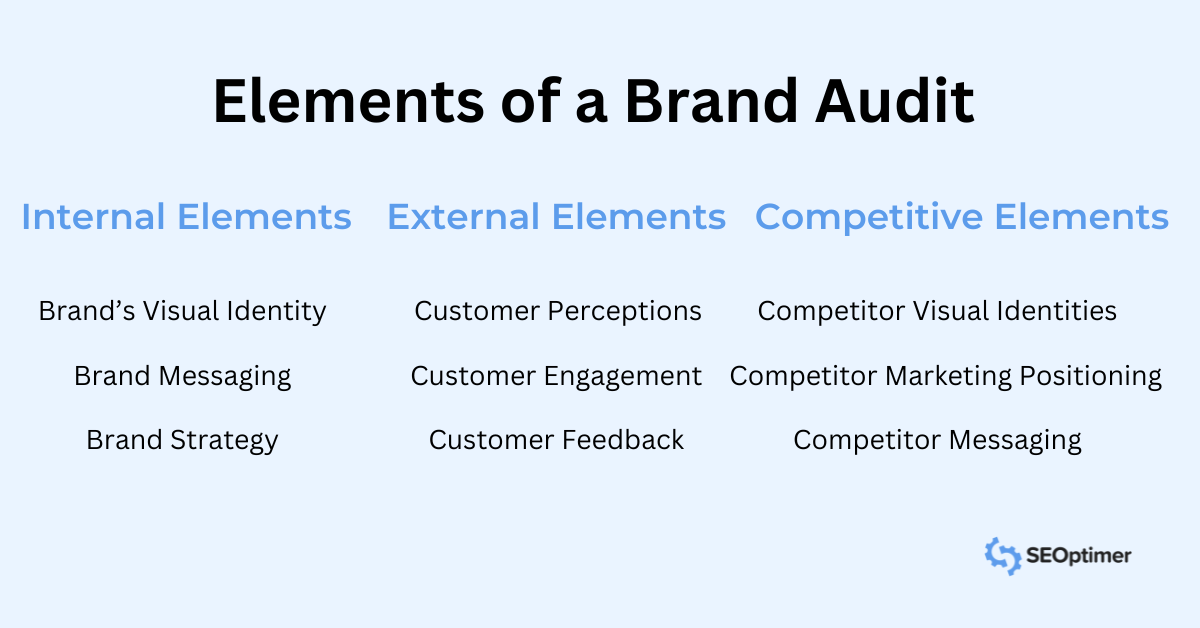
A comprehensive brand audit involves examining various elements of your brand. These elements can be grouped into three main categories: internal, external, and competitive.
Internal Elements: These include your brand’s visual identity (logo, colors, typography), messaging (tagline, brand story, key messages), and overall brand strategy.
Assessing these elements can help you determine if they are consistent and aligned with your brand’s goals and values.
External Elements: These include customer perceptions, feedback, and engagement. This can be gathered through surveys, social media monitoring, and customer reviews.
Understanding how your target audience views your brand can provide valuable insights for improving customer experience and engagement.
Competitive Elements: These involve analyzing your competitors’ brands to identify their strengths and weaknesses. This can help you identify opportunities to differentiate your brand and gain a competitive edge.
Competitive analysis can include reviewing competitors’ visual identities, messaging, and overall market positioning.
How to Conduct a Brand Audit
Now let’s discuss how you can do a brand audit of your own business.
Consider Your Strategy
The very first step in conducting a brand audit is to consider your brand audit strategy.
The brand audit strategy entails how you will assess and evaluate your brand in its current form.
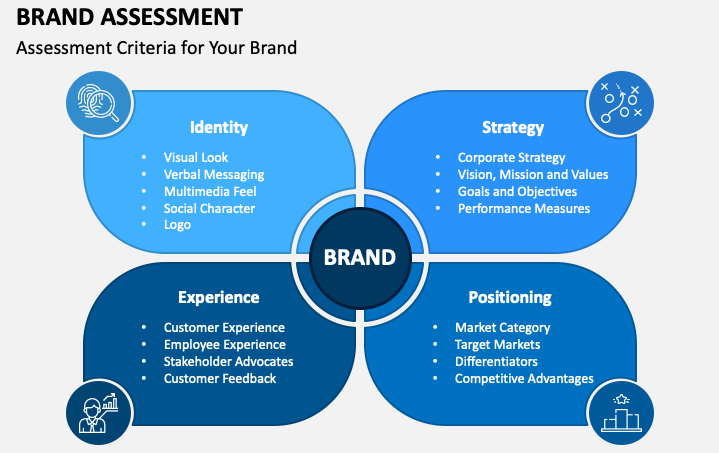
Image source: SketchBubble
This acts as a guiding light during the process and gives clear guidelines on what needs to be analyzed during the brand audit. You can download our brand audit template at the end of this article to assist you in setting up your strategy.
A brand audit strategy clearly defines how you will collect the data that needs to be analyzed.
You can think of the brand audit strategy as a summary of the entire process, including the purpose of the audit, what information needs to be analyzed, and the process of how the data will be collected.
This stage of the brand audit process is also where you define your brand.
In this phase of the brand audit you need to answer the following questions:
- Who are your target customers? What do you want them to think of your brand?
- What are your goals and objectives in the short and long term?
- What are your brand’s vision, mission, and core values?
- Who are your competitors?
- What are your strengths and weaknesses?
- In your opinion, what sets your brand apart from its competitors?
Evaluate Brand Marketing Assets
The second step in doing a brand audit is to evaluate all of your brand’s marketing assets.

This includes the following:
- Website design, colors, and fonts
- Business cards
- Email marketing content, such as email templates
- Social media content such as post designs and cover images.
- Logo
- Sales and marketing brochures, and any other print advertisements
You should ask yourself the question, “Are these marketing assets consistent in terms of your intended tone of voice and design?”
Here are some questions that you can ask to evaluate your brand assets:
- Are all brand assets up-to-date with your current visual branding?
- Can these brand assets be used across all other modern marketing channels such as Twitter, Pinterest, LinkedIn, etc. or do you need to re-create them for each platform?
- Can you easily re-use and modify these brand assets according to each social media platform’s unique characteristics?
- Are you using a template format that can be used when creating new visual content or brand assets?
- Do these assets accurately reflect and represent the “image” of your brand and business?
For instance, if you’ve defined your brand as one that targets individuals who enjoy outdoor adventures, then you’ve got to ensure that your website includes content about camping, hiking, rock climbing, etc.

If these elements are not aligned, then this is something that you should focus on improving. This can be added to an action list of things to do after the completion of your brand audit.
Review SEO and Web Analytics
The next step of the brand audit process is to review your social and web analytics, as well as SEO performance.
This is an important step in the process since you’ll be collecting data on how people find you on the web, what’s your best-performing content, audience demographics, etc.
You can use Google Analytics to review all of your web analytics.
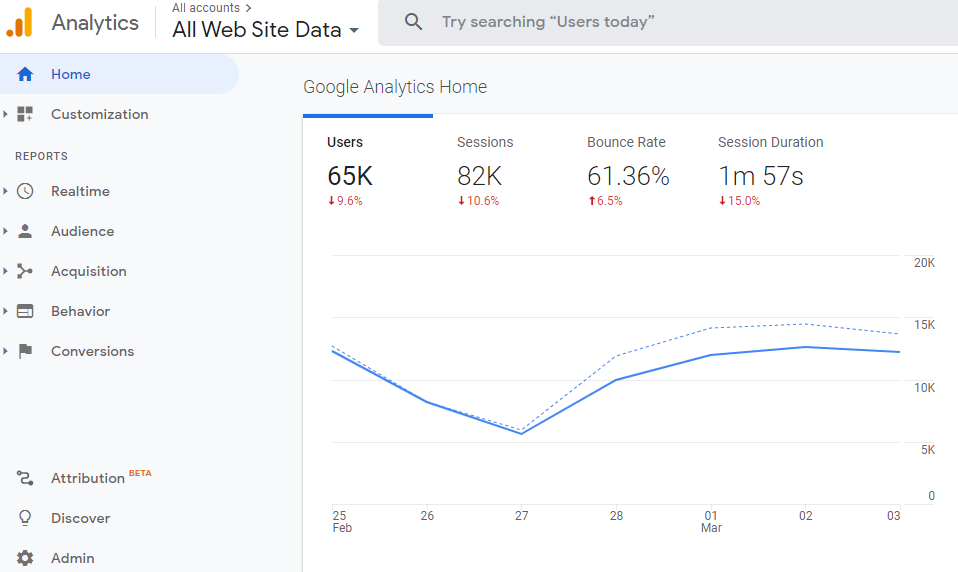
Audit Organic Traffic
When reviewing your web analytics you should look at where all your traffic comes from. If you discover that it originates from one or two sources only, then it means you’re relying too much on a single source for traffic.
For instance, if you heavily rely on traffic from a social platform such as Facebook, you’re at the mercy of their algorithm and any changes to that algorithm can have a detrimental impact on your traffic.
Audit Traffic Demographics
Another key metric to evaluate when reviewing web traffic is to determine if your website is getting traffic from your target audience. Remember, you don’t want just any traffic, you want highly targeted traffic from your target audience.

Evaluate Landing Page Conversions
When conducting a brand audit it’s also important to evaluate your landing page conversion rates. This will indicate if you need to do some conversion rate optimization on the pages that aren’t generating conversions.
Review SEO Performance
The last part of this section of the brand audit process is to review your website’s SEO performance.
You can use an SEO audit tool to identify any problems that may be holding back your website from achieving its true ranking position.
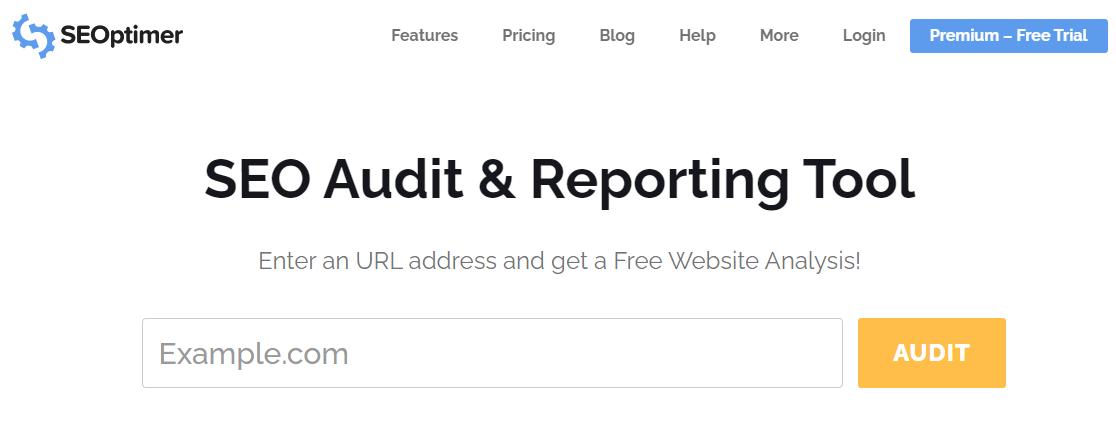
Review Social Data
Reviewing social data can give more insights on the audience that your brand is currently attracting. This data will reveal whether or not your social media content is appealing to and attracting the right people.
Analyze Social Media Content Performance
You can also get an in-depth look at which social media content is performing the best so that you can create more content based on the same strategy.
A tool such as SocialStatus can be used to get insights into best-performing social media content on multiple social media platforms such as Facebook, Instagram, Twitter, LinkedIn, and more.
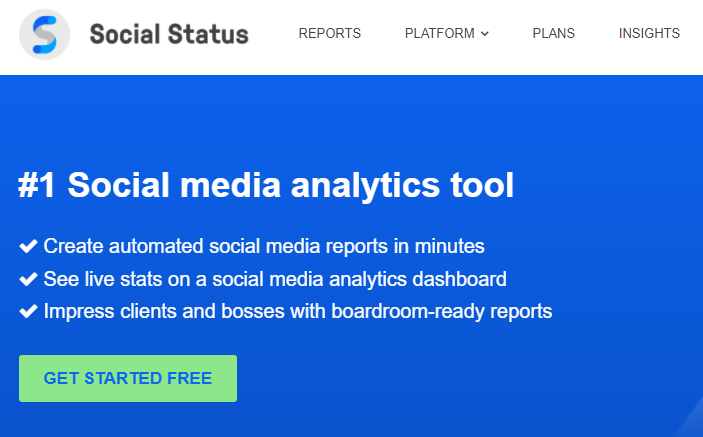
Here are some questions that you can ask regarding the performance of your social media content:
- Which social media platform is generating the most traffic to your website?
- Which social media platform is generating the most conversions?
- Which social media content is generating the most engagement?
Analyze Audience Demographics
Marketers should analyze the demographic data of their audience on all their social media profiles.
This will reveal if a brand is reaching its target audience with its current social media marketing strategy. If not, then marketers need to reevaluate their current strategy in order to reach the right audience.
A tool such as SocialStatus can be used to analyze audience demographics too.
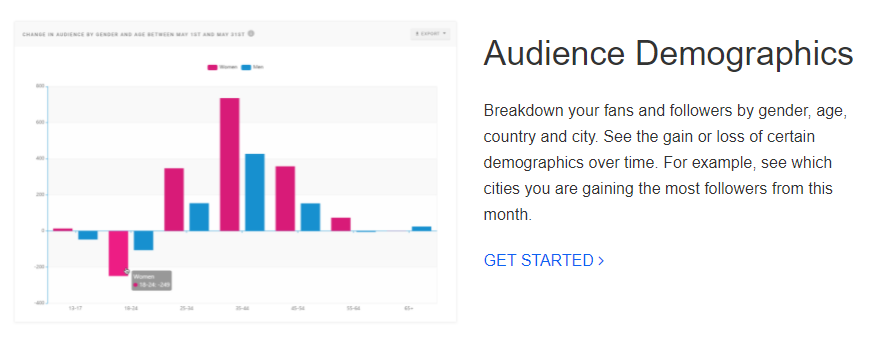
Alternatively, each social media platform has its own analytics section where account owners can get in-depth insights on the performance of their social media accounts.
Review Sales Data
Reviewing your sales data is also important when conducting a brand audit. Sales data can help you understand how your brand is performing in terms of revenue, customer acquisition, and retention.
Analyzing sales data can also help identify trends and patterns that can inform your brand strategy.
Start by reviewing your overall sales performance over the past year. Look for any significant changes or trends in your sales data.
Identify any periods of growth or decline and consider potential factors that may have influenced these changes.
Next, analyze your customer acquisition and retention data. This can help you understand how effective your brand is at attracting new customers and retaining existing ones.
Identify any patterns or trends in customer behavior that can provide insights for improving your brand strategy.
Finally, consider segmenting your sales data by product or service category. This can help you identify which offerings are performing well and which may need additional attention.
Use this information to make informed decisions about your product or service portfolio.
Create a Customer Survey
Marketers shouldn’t just rely on the web and social data to get a complete picture of their brand’s performance in the marketplace.
Instead, they should survey all of their past and current customers to get an idea of how other people perceive the brand.
By conducting a customer survey, brands can figure out if there are any gaps or misalignments between the current versus their desired brand perception.
Businesses can survey their customers using online polls or questionnaires, focus groups, and telephone interviews.
A tool such as SurveyMonkey can be used to create and distribute customer surveys in minutes.
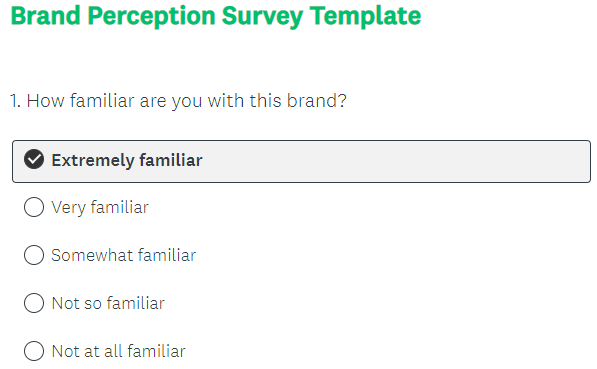
Here are some questions that you can ask your customers in this stage of the brand audit process:
- What comes to mind when you think of our brand?
- What problem do we help you to solve?
- List 3 words that best describe our brand.
- How could we improve our services and products?
- How would you rate our website’s user experience?
- Would you recommend us to your friends and family? Why?
Survey Non-Customers From Your Target Audience
Another important step in conducting a brand audit is to gather feedback from people who are not currently customers but fall within your target audience.
This can provide valuable insights into how your brand is perceived by potential customers and identify any barriers to conversion.
Start by creating a survey that includes questions about brand awareness, perception, and preferences. Use a mix of open-ended and multiple-choice questions to gather both qualitative and quantitative data.
Some sample questions include:
- Have you heard of [Your Brand] before?
- What comes to mind when you think of [Your Brand]?
- How do you perceive [Your Brand] compared to competitors?
- What factors would influence your decision to choose [Your Brand]?
Distribute the survey through various channels, such as social media, email, or online communities.
Analyze the responses to identify common themes and areas for improvement.
Survey Employees
Another stage of the brand audit process is to survey employees.
No one knows a brand or a business better than the individuals working there. By surveying the employees of a business, you can get an idea of what their perceptions are of the respective brand.
This will also reveal what their opinions are on the company culture and what can be done to improve overall employee morale.
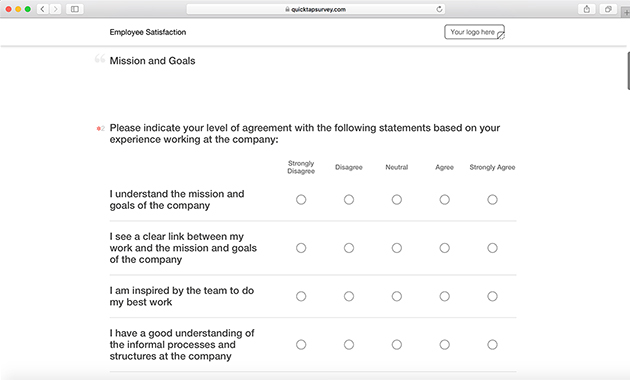
Here are some questions that you can ask your employees:
- Why do you think our customers buy from us?
- Think of 3 words that best describe our brand.
- What is one thing that we can do to improve our products or services?
- What is our brand’s vision?
Evaluate Competitors
As mentioned at the start of this article, the business landscape is packed with competitors in every market or industry.
This section of the brand audit entails analyzing your competitors in order to determine what differentiates them, their strengths and weaknesses, and any gaps in the market that you could fill.
As Sun Tzu stated, “Know thy enemy and know yourself”, it’s important to get a deep understanding of your main competitors.
When analyzing your competitors, you should try to identify the reasons why other people are buying from them. This may give you some ideas on how to incorporate some of their strategies into yours.
A key part of evaluating your competitors is to analyze their online presence. This entails looking at their SEO, web, and social performance.
Evaluate Competitors’ SEO and Web Performance
Here are a few questions you can ask to analyze your competitors’ SEO and web performance:
- How much traffic are your competitors getting? (You can use a tool like SimilarWeb to get this information)
- What keywords are your competitors ranking for?
- Which areas of your competitor’s SEO need improvement?
You can also generate a white label SEO report of your competitor’s websites to determine what keywords they are ranking for, their website’s loading speed and core web vital metrics, as well as many other important SEO metrics.
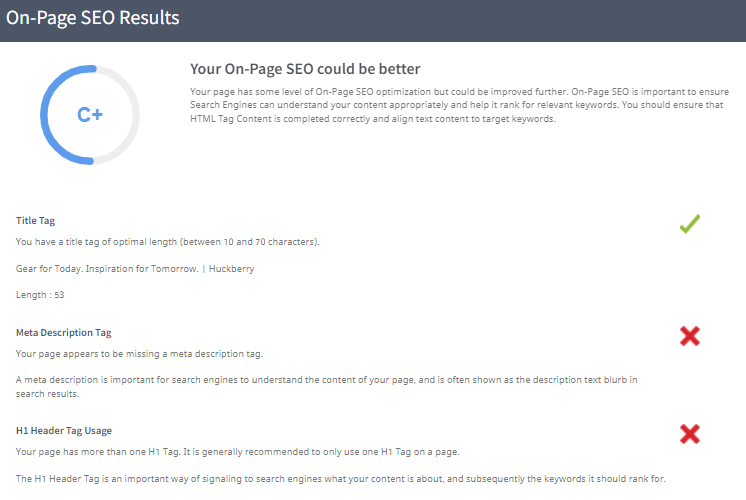
Evaluate Competitors’ Visual Branding
Here are some questions to ask to evaluate your competitors’ visual branding:
- How do their brand assets look aesthetically?
- Do their visual brand assets align with their brand’s overall look and feel?
- Is their visual branding consistent across all their social media platforms?
Evaluate Competitors’ Social Media Performance
It’s important to evaluate your competitors’ social media content and performance in order to gauge what you’re up against.
By analyzing the competition’s top-performing social media content, marketers can get a few ideas to add to their current social media marketing strategy.
Here are some questions that you can ask when evaluating competitors’ social media performance:
- What social media content is getting the most engagement?
- Which social media platform seems to be their strong point? E.g. Are they producing much more content on Instagram compared to Snapchat?
- How regularly are they posting on social media?
- Which social media platform is generating the most website traffic? (You can find this data using SimilarWeb)

Another aspect of analyzing your competitors is to ask your customers the same questions about competitor brands as you asked them about yours.
Make a Decision Based on Your Findings
A brand audit is all about figuring out how you can improve your brand’s performance. So at the end of the brand audit, you should have an action plan of all the strategies and improvements you are going to implement going forward.
Using all of the data that you’ve collected, you should generate a report with all of your findings.
This report should include how your brand is currently positioned in the market and feedback from customers and employees on how to improve.
A key part of the brand audit report is to establish a timeline for completing all of the action items. This is important because some action items carry more weight than others, and need to therefore be completed sooner.

Image source: NTaskManager
Monitor and Review Progress Over Time
The last phase of doing a brand audit is actually a continuous process and entails monitoring and reviewing progress.
As you implement the action items you should review performance to determine if they are having the desired effect.
Not only that, you should regularly do a brand audit to ensure that your brand remains relevant in the ever-evolving market.
Brand Audit Example
Now that you know what the steps are to do a brand audit, let’s see an example of a brand audit in action.
For our brand audit example, we’ve elected to choose Huckberry, an eCommerce business that sells outdoor gear, equipment, and men’s apparel.

Please note that this is a fictional brand audit and doesn’t represent an official brand audit from the company. But don’t let the fact that it’s not based on real statistics deter you from reading the brand audit example that we’ve prepared.
Instead, you can use this report as inspiration for your brand audit.
View the brand audit example here.
Brand Audit Template
We’ve created a brand audit template that you can use to audit your brand or your customer’s brand. Feel free to download the template below.
Conclusion
Conducting a brand audit is essential to the long-term success of your business, especially in today’s fast-paced business landscape.
The fact of the matter is that competition is tough and you need to do everything in your power to ensure that your business and brand remain relevant in the eyes of current and prospective customers.
Marketers and business owners should use a brand audit to determine which areas of their business they need to focus on improving and optimizing.
